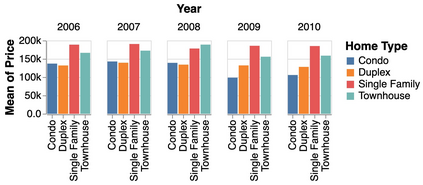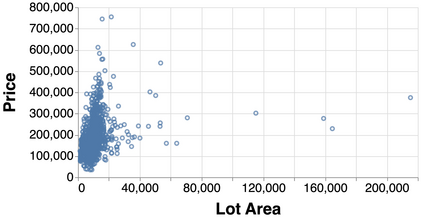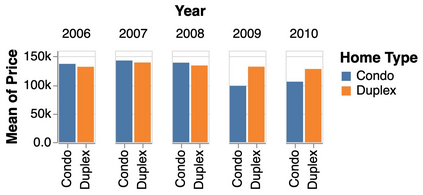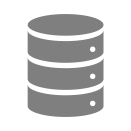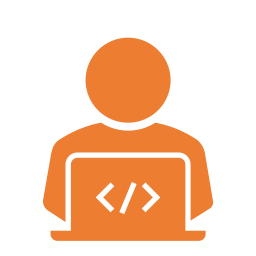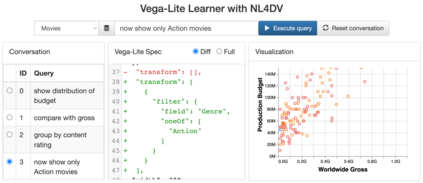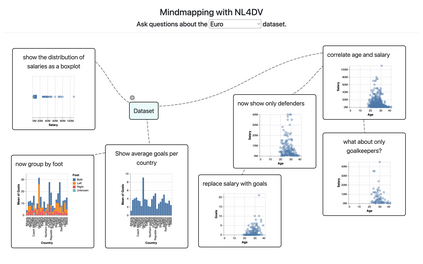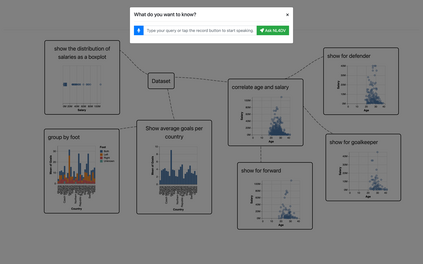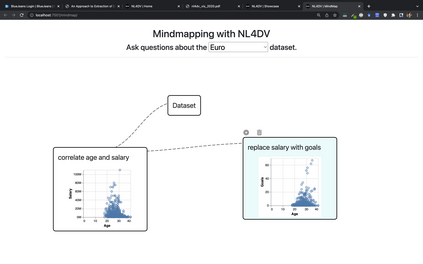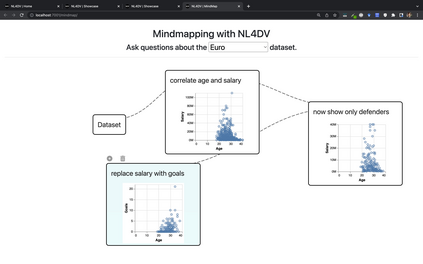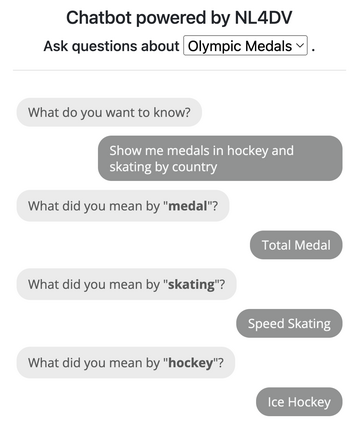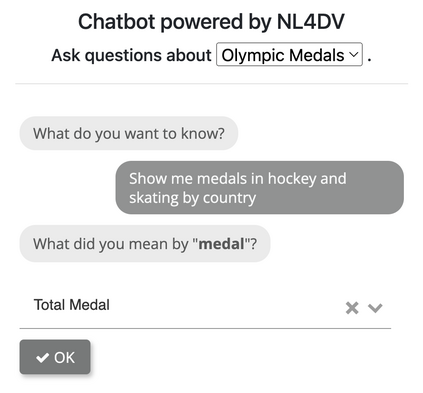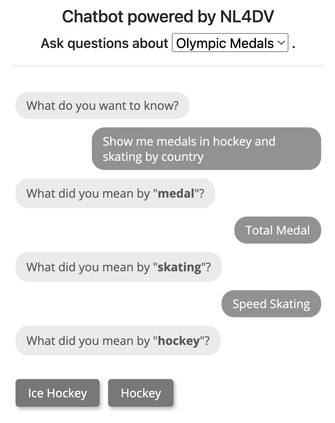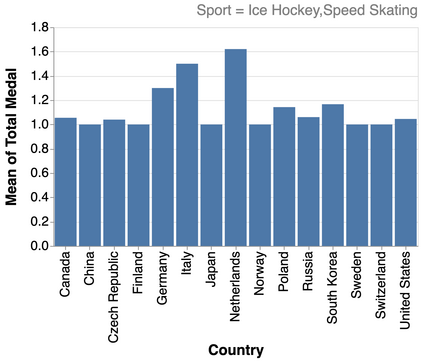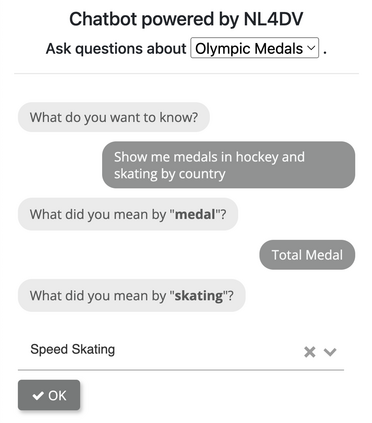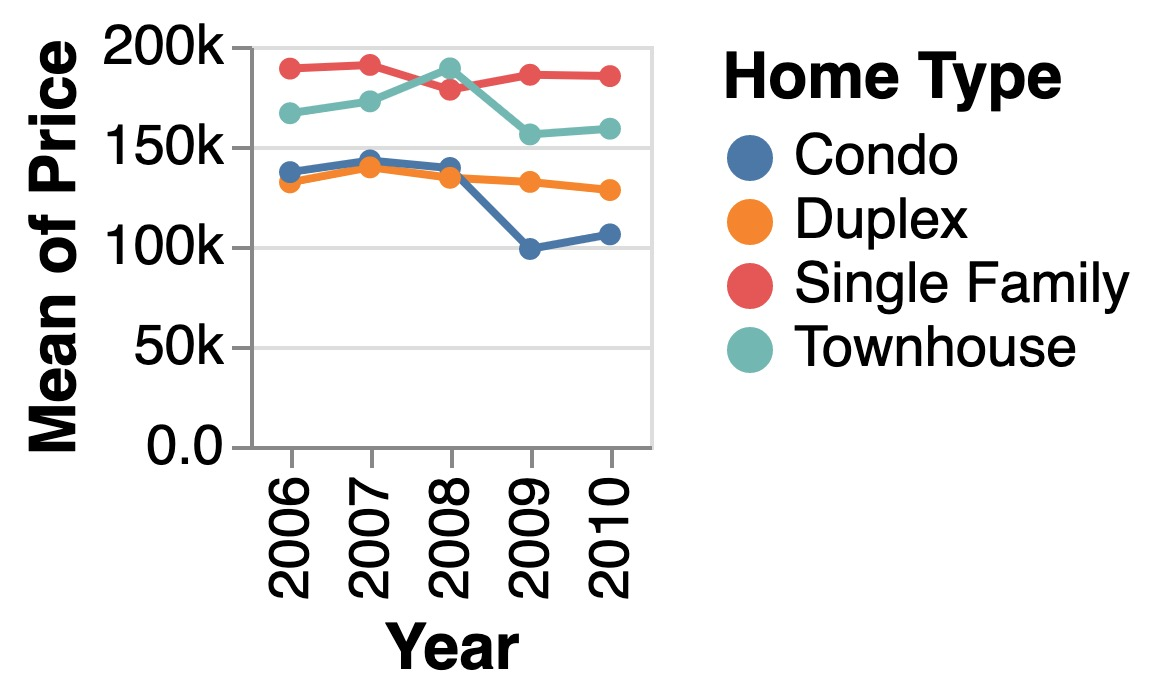Natural language (NL) toolkits enable visualization developers, who may not have a background in natural language processing (NLP), to create natural language interfaces (NLIs) for end-users to flexibly specify and interact with visualizations. However, these toolkits currently only support one-off utterances, with minimal capability to facilitate a multi-turn dialog between the user and the system. Developing NLIs with such conversational interaction capabilities remains a challenging task, requiring implementations of low-level NLP techniques to process a new query as an intent to follow-up on an older query. We extend an existing Python-based toolkit, NL4DV, that processes an NL query about a tabular dataset and returns an analytic specification containing data attributes, analytic tasks, and relevant visualizations, modeled as a JSON object. Specifically, NL4DV now enables developers to facilitate multiple simultaneous conversations about a dataset and resolve associated ambiguities, augmenting new conversational information into the output JSON object. We demonstrate these capabilities through three examples: (1) an NLI to learn aspects of the Vega-Lite grammar, (2) a mind mapping application to create free-flowing conversations, and (3) a chatbot to answer questions and resolve ambiguities.
翻译:自然语言( NL) 工具包使那些在自然语言处理( NLP)中可能没有背景的视觉化开发者能够为终端用户创建天然语言界面( NLIs),以便灵活地指定和与可视化互动。然而,这些工具包目前只支持一次性的表达,而其最起码的能力是便利用户和系统之间的多方向对话。使用这种对话互动能力开发NLIs仍是一项具有挑战性的任务,需要采用低层次的NLP技术处理新查询,以跟进旧查询。我们扩展了现有的基于Python的工具包( NL4DV),用于处理关于表格数据集的自然语言界面( NLLIs),并返回包含数据属性、分析任务和相关视觉化的解析性规范,以Json 对象为模型。具体地说,NL4DV现在使开发者能够促进关于数据集和解决相关模糊性问题的多次同时对话,将新的对话信息添加到产出 JSON 对象中。我们通过三个例子来展示这些能力:(1) NLLIIS 来学习如何自由绘制和解析调问题的方法。


